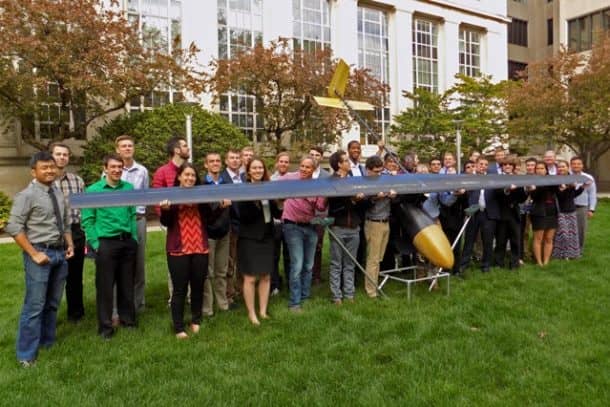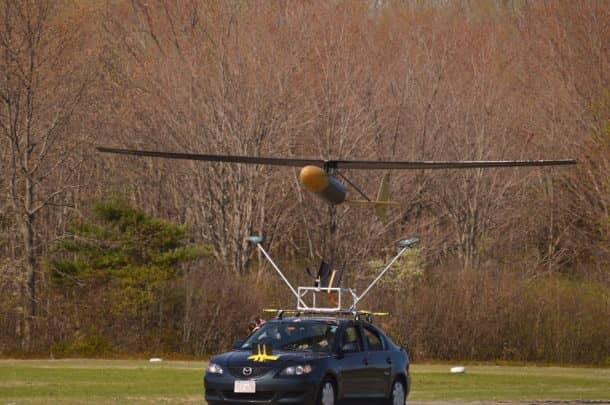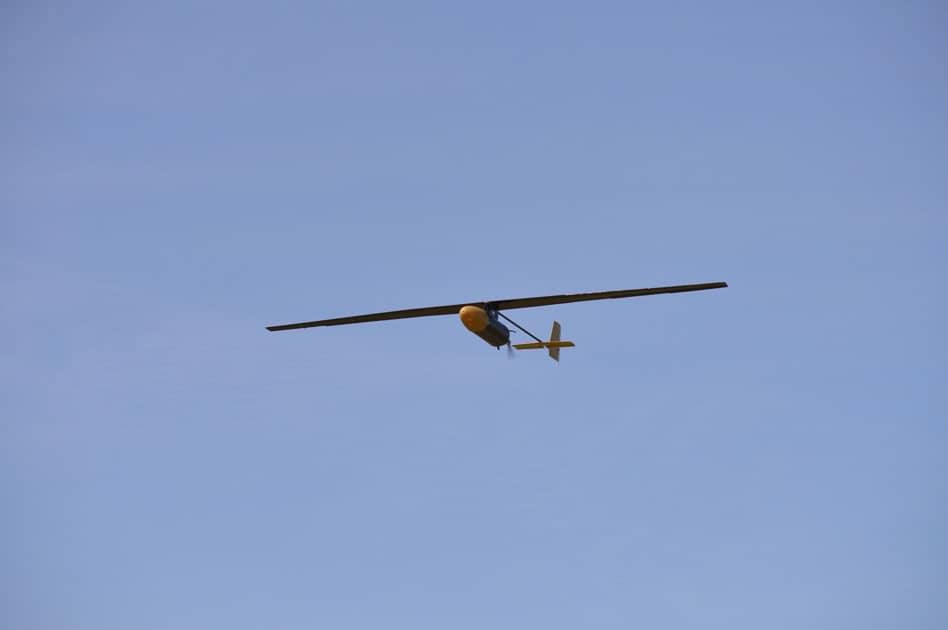Unmanned Aerial Vehicles have become widely popular as the technology has matured, but the major impediment with the UAVs is their limited flight time. While Qinetiq Zephyr remains at the top for the longest flight time of over 336 hours, the solar-powered drone flies at such high altitudes that limit its applications. A team of MIT engineers has developed a UAV design that uses a single gas tank to stay aloft at low-altitudes for five days.
The glider0like UAV weighs less than 150 pounds (68 kg) with a wingspan of 24 feet (7.3 meters) powered by a 5-hp gasoline engine. It is designed to provide communication support in disaster-struck areas, allowing a payload capacity of 20 pounds (9 kg). It could also be used for general monitoring of the environment. One of the leaders of the project, R. John Hansman says, “These vehicles could be used not only for disaster relief but also other missions, such as environmental monitoring. You might want to keep watch on wildfires or the outflow of a river.”
It sounds tempting to use solar energy to power the craft but that considerably limits the functionality that the alternate fossil-fuel engine could offer. “[A solar vehicle] would work fine in the summer season, but in winter, particularly if you’re far from the equator, nights are longer, and there’s not as much sunlight during the day. So you have to carry more batteries, which adds weight and makes the plane bigger,” Hansman explains.

The computer-modeled design for the gasoline-powered UAV was created on the software tool GPkit developed in-house by another project leader Warren Hoburg. The design tool takes particular constraints and then models optimal design dimensions for a vehicle. While most design tools cater for very limited constraints, GPkit provides for 200 constraints simultaneously.
Lightweight materials like carbon fiber were used in the construction of the UAV, so they can be taken apart for shipping and delivered to disaster zones as quickly as possible. According to the software emulations, the craft will be able to fly at altitudes of 15,000 feet, at any latitude in winds of up to 94th percentile, for over five days.
The team built the UAV prototype last year, and now they have created a launch system consisting of a basic metal frame that attaches to the roof rack of a car. The UAV can sit atop the frame, and when the vehicle accelerates to the UAV’s takeoff speed while the craft is angled upwards, the fastener will automatically release launching the UAV into the sky.

The UAV has not been tested for long-distance endurance conditions yet, but short run flights were conducted successfully in May. The weight of the craft in the test flights was reduced from 150 to 55 pounds so it could comply with FAA small unpiloted aircraft regulations. Despite the fact that test flights we conducted successfully, complete with launch, landing, and flying, the team says they need to consider many other factors for long-term flights. “There are a few aspects to flying for five straight days. But we’re pretty confident that we have the right fuel burn rate and right engine that we could fly it for five days,” explained Hoburg.


